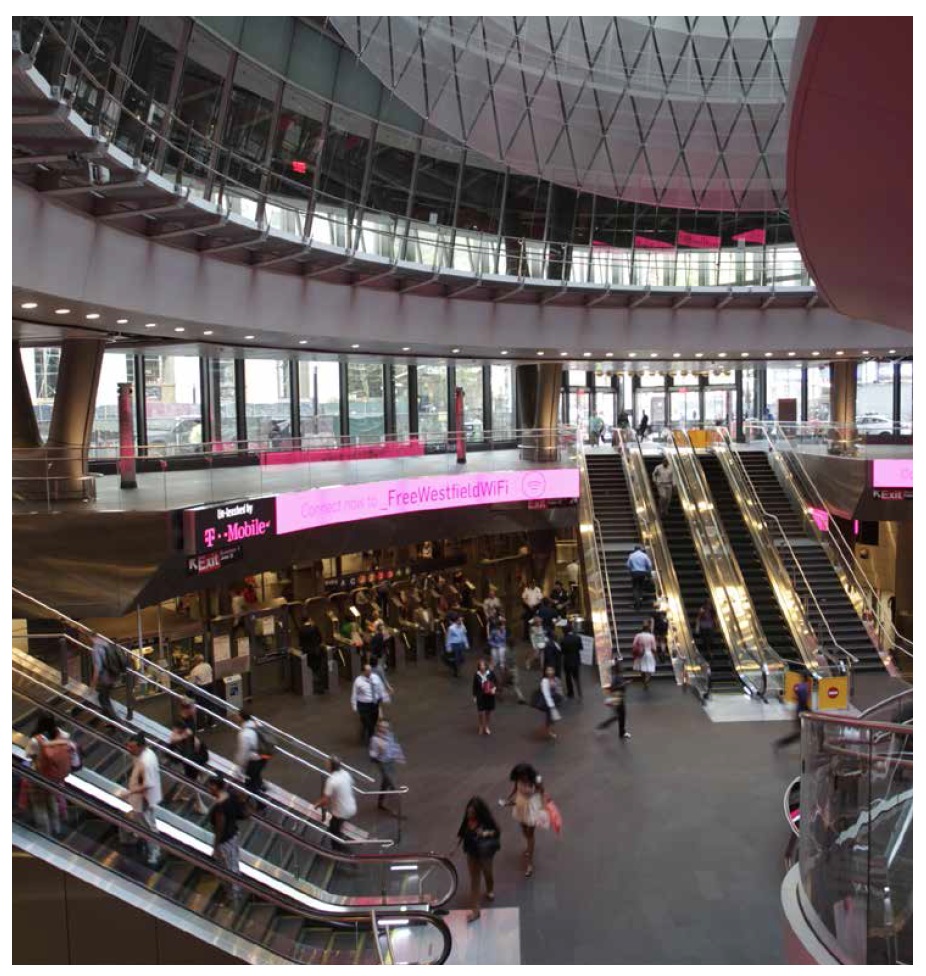NEW YORK UNIVERSITY
RUDIN CENTER FOR TRANSPORTATION
Introduction
 For many years after the terrorist attacks of September 11, 2001, the redevelopment of the World Trade Center site seemed stuck in a quagmire of competing priorities, planning mistakes, unrealistic schedules,cost overruns and delays. As the years passed, some observers became convinced that the Port Authority of New York and New Jersey (PA) should never have taken on the job of redeveloping the World TradeCenter site. Others expressed concern that the rising cost of redeveloping the site would seriously weaken the PA’s ability to invest in the region’s vitally important trade and transportation infrastructure. In short, it was argued, the redevelopment of the World Trade Center was a questionable investment of public dollars by the Port Authority.
For many years after the terrorist attacks of September 11, 2001, the redevelopment of the World Trade Center site seemed stuck in a quagmire of competing priorities, planning mistakes, unrealistic schedules,cost overruns and delays. As the years passed, some observers became convinced that the Port Authority of New York and New Jersey (PA) should never have taken on the job of redeveloping the World TradeCenter site. Others expressed concern that the rising cost of redeveloping the site would seriously weaken the PA’s ability to invest in the region’s vitally important trade and transportation infrastructure. In short, it was argued, the redevelopment of the World Trade Center was a questionable investment of public dollars by the Port Authority.
Yet, even as the news seemed to get worse, real work was getting done – selection of a design for the September 11 memorial, the restoration of PATH and subway service, the construction of a new 7 World Trade Center, the rebuilding (often invisible) of the site’s basic infrastructure, and completion and opening of the National September 11 Memorial.
During the past two years, the redevelopment of the World Trade Center site has achieved considerable momentum.
- In November 2013, Silverstein Properties, Inc. (SPI) opened 4 World Trade Center, the first office tower to be completed on the original 16-acre World Trade Center site.
- In May 2014, the Museum component of the National September 11 Memorial and Museum opened to the public; in its first year the Museum attracted 2.7 million visitors.
- A few months later, the PA and SPI reached agreement on a plan for financing and completing construction of 3 World Trade Center, with branding and advertising behemoth Group M taking more than 500,000 square feet of the building’s office space. Construction is now progressing rapidly.
- In the fall of 2014, Condé Nast, the PA, and other tenants began to move into One World Trade Center and 4 World Trade Center.
- In December 2014, Westfield began to announce some of the tenants that would be moving into the World Trade Center’s retail space.
- In May 2015, One World Observatory – the new observation deck atop One World Trade Center – opened to the public. The Observatory is expected to attract 3.8 million visitors per year.
- In June 2015, News Corp, 20th Century Fox and SPI announced a non-binding agreement to have the two Murdoch-controlled companies lease nearly half of the office space planned for 2 World Trade Center.
Much work remains to be done, and the project still entails considerable risks, for the PA, SPI, and Westfield, the company that controls the World Trade Center’s retail space. But the outlook for the World Trade Center is brighter now than it has been at any time since the twin towers fell. Therefore, it seems like an appropriate time to test the conventional wisdom and more rigorously analyze the question, “Was the redevelopment of the World Trade Center a worthy investment for the PA?”
The answer is a resounding yes. Not only is the PA likely to essentially recoup its investment in the redevelopment of the World Trade Center, but that investment is having and will continue to have a major positive impact on the region’s economy.
Part One of the report examines what the redevelopment of the World Trade Center site will have cost the PA by the time it is completed, and the extent to which the Authority might be able to recover what it will have spent from the revenues the site will generate.
Part Two analyzes the economic impact of the investment of nearly $15 billion in redevelopment of the site through the end of 2014.
Part Three examines the World Trade Center’s role in the ongoing revitalization of Lower Manhattan, and how that contribution is likely to grow during the next several years.
Part Four discusses the World Trade Center’s contribution to the economic vitality of New York City and the New York-New Jersey region.
Part Five concludes with some brief observations about the lessons that can be taken from the redevelopment of the World Trade Center – for the PA, the City and the region.
About the New York University Rudin Center for Transportation
wagner.nyu.edu/rudincenter
The Rudin Center for Transportation Policy and Management at NYU’s Wagner school explores challenges in transportation and infrastructure. The Center draws upon faculty and graduate students to conduct research on cities and mobility, information technology in transportation and access to mass transit.
Tags: New York City, New York University, NYC, NYU, Port Authority of New York & New Jersey, Rudin Center, World Trade Center, WTC






 RSS Feed
RSS Feed